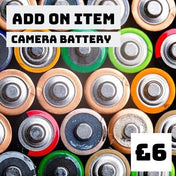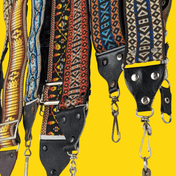Film cameras might appear like a relic of the past in the current digital world, where smartphones and digital cameras have become commonplace. But embracing film photography is becoming more and more popular among photographers, both amateur and professional. The benefits of using film cameras, the reasons for its rebirth, and tips for getting started with film photography are all covered in this article.
With the invention of digital cameras, it seemed as though film photography had reached its end. Yet, film cameras have made a startling comeback recently. Not just for nostalgic reasons, film is becoming more and more popular among photographers. Many factors have led to the return of film cameras in fashion.
The appeal of film cameras
Film cameras have a certain quality that digital cameras simply can't match. They need a level of patience and expertise that are frequently lacking in digital photography, and they have a tactile feel that digital cameras lack. When you take pictures with a film camera, you are compelled to take your time, consider your compositions, and take more deliberate pictures. A higher appreciation for photography's finer points may result from this delayed procedure.
The unique qualities of film photography
The distinctive traits that film photography produces are among its major draws. Film has a unique appearance and feel, as well as unique hues and tones that are challenging to reproduce through digital post-processing. Moreover, film grain gives photos personality and texture, as well as a vintage or timeless feel. Moreover, film cameras offer a wider dynamic range than digital cameras, which can lead to more detail in an image's highlights and shadows.
The cost of film photography
One of the major entry barriers for film photography is the cost. It can be expensive to buy film and process it, as well as to keep buying film stock. But, there are alternatives to save expenses, like buying in bulk, developing your own film, or utilising less expensive or old-fashioned film. Given the unique qualities of film photography, many photographers feel the cost is justifiable.
The process of shooting on film
Digital photography is not the same as shooting film. The lack of features and customisation possibilities on film cameras may be both a blessing and a disadvantage. You don't have to stress about changing settings or getting lost in menus, on the one hand. But, because you don't have the immediate feedback that digital cameras give, you have to be more deliberate in your shooting. Film photography can be more gratifying but it calls for greater endurance and skill.
Developing film
After being shot, a roll of film needs to be developed. While it could be challenging for beginners, developing film is an essential part of the film photography experience. If you create your own film, you might be able to save money and have more control over the final product. Yet purchasing the appropriate equipment and chemicals can also need a significant amount of time and money.
The importance of slowing down
Shooting on film has the advantage of making you slow down and consider your shots. With digital photography, it's simple to quickly capture hundreds of pictures without giving each one much thought. With film, each shot is more important and purposeful, which can provide photos with greater depth and impact.
Learning and experimenting
Shooting on film also provides a great opportunity to learn and experiment with different techniques and styles. Each type of film has its own characteristics and can produce different results. By experimenting with different films and developing techniques, you can find your own unique style and develop a deeper understanding of the art of photography.
How to get started with film photography
Getting started with film photography can be intimidating, but it doesn't have to be. Here are a few tips to help you get started:
- Choose a film camera: There are many different types of film cameras available, from point-and-shoot cameras to SLRs. Choose a camera that fits your budget and your shooting style.
- Buy film: There are many different types of film available, each with its own unique qualities. Start with a few different types and experiment to find the ones that you like best.
- Learn to develop film: Developing film yourself can be a cost-effective and rewarding option. There are many resources available online and in books to help you get started.
- Slow down and be intentional: Shooting on film requires a different mindset than shooting digital. Slow down, think about your shots, and be intentional with each frame.
- Experiment and have fun: Film photography provides a great opportunity to experiment and try new things. Don't be afraid to make mistakes, and have fun with the process!

In conclusion, there are several reasons why film cameras are resurfacing in the digital era. The experience of shooting on film is one-of-a-kind and fulfilling, with a certain look and feel. While film photography can be more expensive and time-consuming than digital photography, many photographers believe the investment is worthwhile given the distinctive advantages that film offers. Don't be afraid if you want to try film photography; it's a gratifying and enjoyable experience that can help you gain a deeper understanding of the finer points of photography.


















